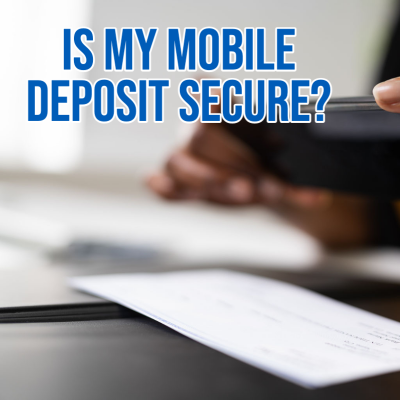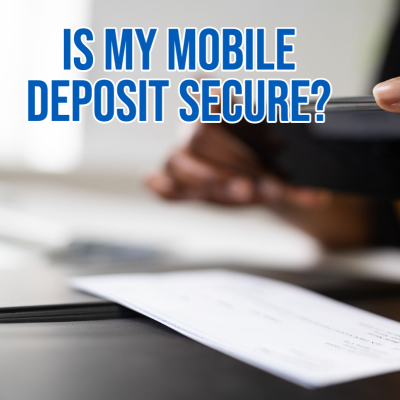Today’s modern banks are embracing technology and mobile applications. With this service comes the ability to deposit checks with your smartphone without ever having to step into your local bank or visit an ATM. It is convenient, but is it a safe way to ensure your money gets deposited into your account? Here we look at what you need to know about Mobile Deposit and how to keep it a convenient – and safe – way to do your banking on the go.
bank or visit an ATM. It is convenient, but is it a safe way to ensure your money gets deposited into your account? Here we look at what you need to know about Mobile Deposit and how to keep it a convenient – and safe – way to do your banking on the go.
What exactly is Mobile Deposit?
Mobile deposit starts with first installing your bank’s mobile app on your smartphone or tablet. From there, you sign the back of your check just like you would a deposit at a physical bank. Then, use your phone’s camera to take a picture of the front and back of the check. Next, you follow the instructions on the Planters First Bank’s mobile app for depositing a check, then the funds are electronically and securely deposited into your checking account.
How secure is it?
The depositing of a check with your mobile phone is based on taking an image of the check and using character recognition to record the amount deposited. Your mobile phone does this with a camera. When the bank receives the images, it verifies the routing and account numbers and makes sure the check has not already been deposited, and that there are enough funds in the payer’s account to cover the amount of the check.
What makes this process secure is that all the information about the check is encrypted. Even if someone were to steal your phone, the information would not be able to be decoded. In addition, the image of the check is not stored on the phone, so there is no way it could sent as an image file or posted on social media. The picture is snapped, encrypted, and sent to the Planters First Bank’s secure servers.
That said, after you take a picture of the check, the physical check should be safely stored for at least two weeks as a backup in case there is a problem. The check contains your name, address, bank account number, and bank routing number. A lot of times, people are apprehensive about sending pictures of their checks over their phones, but then are not as careful about checks that have already been deposited.
Security Best Practices
In addition to the encryption and safekeeping of checks you have already deposited, there are things you can do to enhance the security of your mobile app and mobile deposits:
• Do not use your mobile banking app on open wi-fi networks. Use your personal wi-fi either on your phone or at home.
• Make sure the access code for your phone and the access code on your banking app are not the same. Use a different passcode for each one.
• Do not leave your phone logged in to the Planters First Bank’s mobile app. Take the time to log off and close the app.
• Be cautious about apps you install on your phone. Unless you get them from a reputable source like Google Play or Apple, it is possible to accidentally load and install malware on your phone. This malware can access information stored on your phone, including access to the mobile banking app, and use it maliciously.
• Finally, make sure you’re sticking with the official mobile app to do your banking. Text-based banking systems do not use encryption and thus can leave your information exposed and vulnerable.
Mobile deposit is a benefit of banking on the Planters First Bank mobile app. Deposits can be made instantly on your mobile device, making trips to the bank a task of the past. Still, it is important to be careful and responsible to make sure your money indeed gets where you want it to go.
